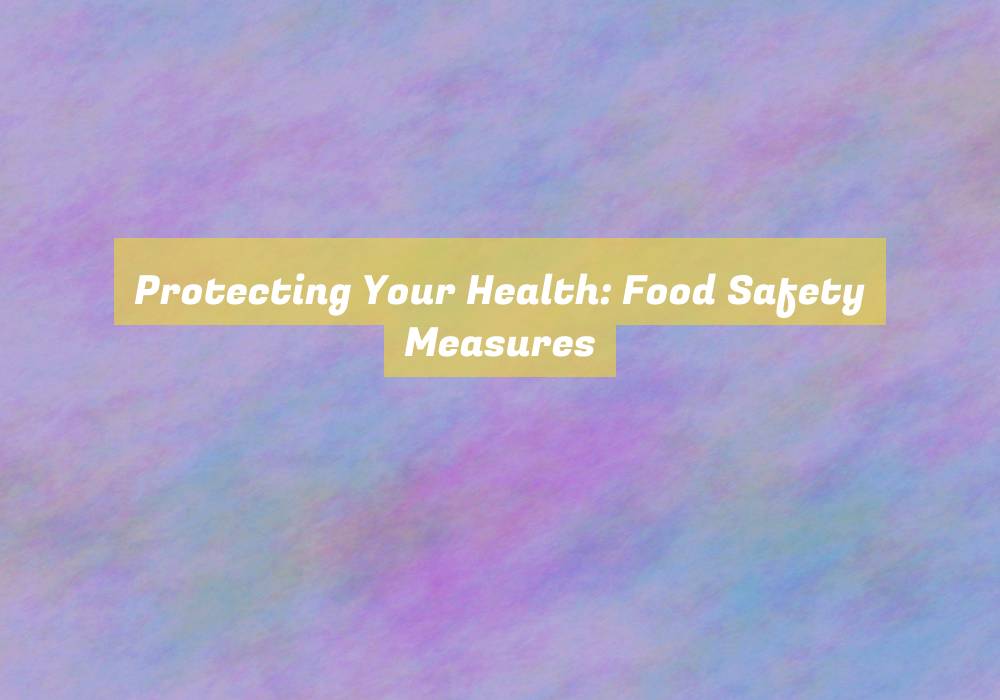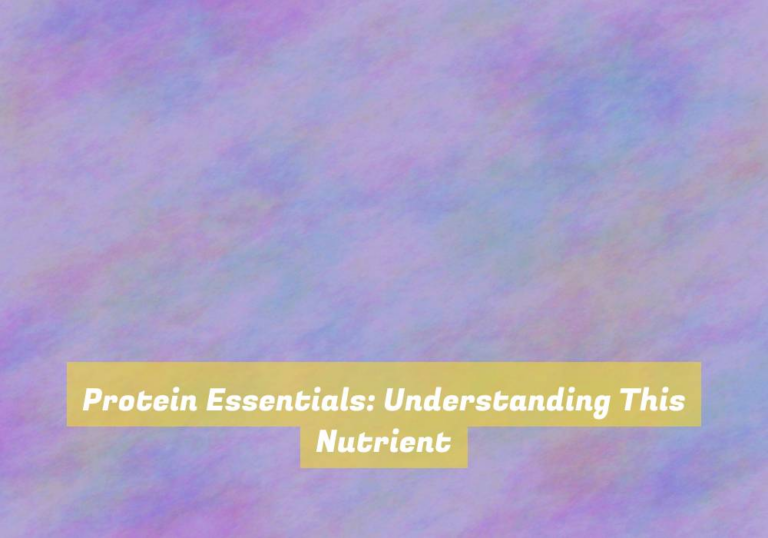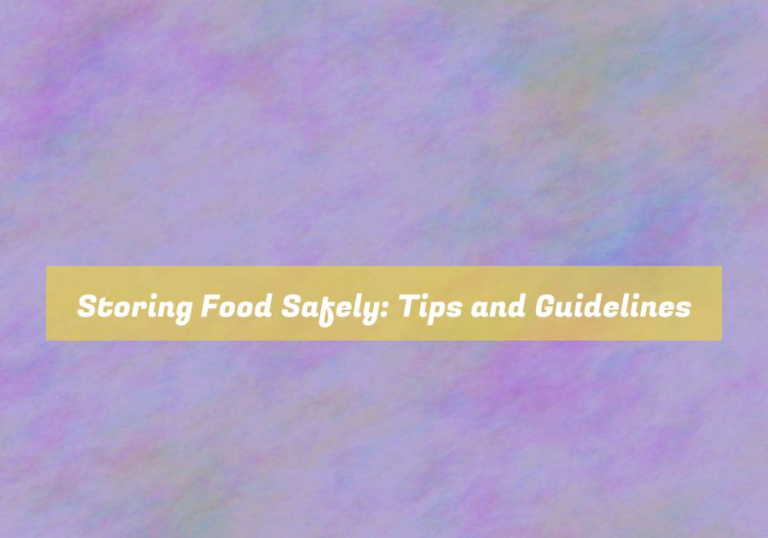Protecting Your Health: Food Safety Measures
You may not realize it, but your kitchen can be a potential health hazard waiting to happen.
From the moment you bring groceries home to the time you serve a meal, there are numerous opportunities for foodborne illnesses to sneak in and wreak havoc on your well-being.
But fear not! There are simple, yet crucial, steps you can take to safeguard yourself and your loved ones from the perils that lurk within your pantry and refrigerator.
So, letG??s explore the essential food safety measures that will give you peace of mind and keep your health in check.
Understanding Food Labels
Understanding food labels is essential for making informed choices about the food you consume. When you pick up a food product, the label provides vital information about the nutritional content, serving size, and ingredients. By reading the food label, you can monitor your intake of nutrients like fat, sodium, and added sugars.
Pay attention to the serving size, as all the information on the label is based on this specific portion. The percent daily value (%DV) helps you understand the nutrient content in each serving. This can guide you in choosing foods that are high in nutrients and low in substances like saturated fats, trans fats, and cholesterol.
Additionally, ingredients are listed in descending order by weight, so you can identify the main components of the food product. Being aware of what goes into your body empowers you to make healthier choices.
Take the time to read and understand food labels, as this small act can significantly impact your overall health.
Proper Food Storage
To ensure food safety, proper food storage is crucial in preserving the quality and freshness of your groceries.
Firstly, always check the expiration dates on perishable items and ensure theyG??re stored at the recommended temperature. Refrigeration is essential for items such as dairy, meat, and leftovers. Make sure your refrigerator is set at 40-?F (4-?C) or below to prevent bacteria growth.
Additionally, store raw meat, poultry, and seafood in containers or sealed plastic bags on the bottom shelf to prevent their juices from dripping onto other foods. Dry goods like rice, pasta, and cereal should be stored in airtight containers to keep out moisture and pests.
Furthermore, canned goods should be kept in a cool, dry place and rotated so that older cans are used first. Lastly, always store fruits and vegetables separately, as theyG??ve different storage requirements.
Safe Food Handling
Now that youG??ve established proper food storage techniques, itG??s crucial to understand safe food handling practices to further ensure the safety and quality of your meals.
When handling raw meat, poultry, seafood, and eggs, itG??s essential to prevent cross-contamination by keeping them separate from ready-to-eat foods. Always wash your hands, utensils, and surfaces with hot, soapy water after they come into contact with these raw items.
Additionally, make sure to cook foods to their recommended internal temperatures using a food thermometer. ItG??s also important to refrigerate perishable foods promptly to prevent bacteria from multiplying. When reheating leftovers, ensure they reach a safe internal temperature as well.
Furthermore, when preparing fruits and vegetables, itG??s crucial to wash them thoroughly under running water, even if you plan to peel them. This helps to remove any dirt, bacteria, or pesticide residues. Cutting boards and countertops should be cleaned with hot, soapy water after preparing fruits and vegetables to prevent cross-contamination.
Choosing Reputable Sources
When selecting food sources, always prioritize reputable establishments to ensure the safety and quality of the products you consume. Choosing reputable sources is crucial in safeguarding your health. Look for establishments that have a track record of adhering to food safety regulations and standards. Reputable sources often have transparent supply chains, ensuring that the food you consume has been handled and stored properly from farm to table.
One way to identify reputable sources is to check for certifications from recognized food safety organizations. These certifications indicate that the establishment has undergone rigorous inspections and meets specific safety and quality standards. Additionally, consider seeking out establishments that have a good reputation within the community. Word of mouth and online reviews can provide valuable insights into the practices of a food source.
ItG??s also important to be cautious of sources that offer products at significantly lower prices than others. While it can be tempting to opt for cheaper options, especially in economically challenging times, excessively low prices may indicate compromised safety and quality standards.
Conclusion
So, remember to always check food labels, store food properly, handle it safely, and choose reputable sources for your healthG??s sake.
These simple measures can make a big difference in protecting you and your loved ones from foodborne illnesses and other health risks.
Stay informed and stay safe!





